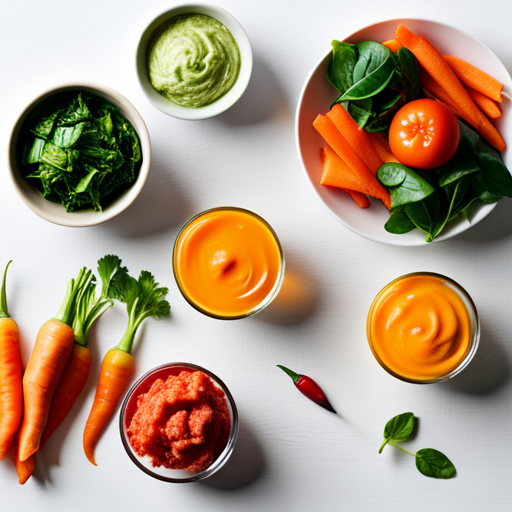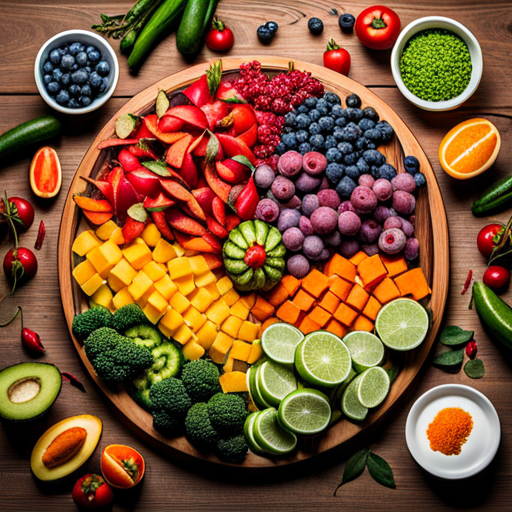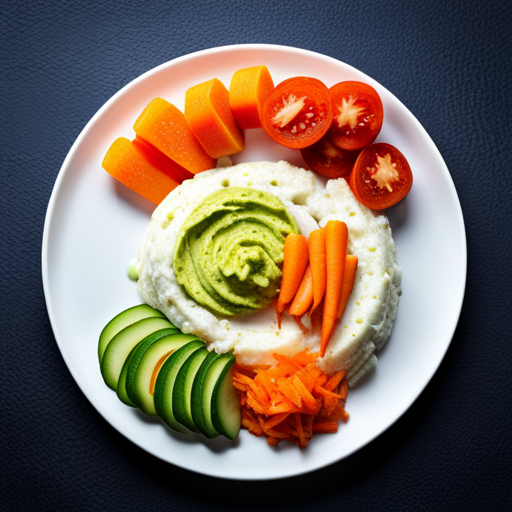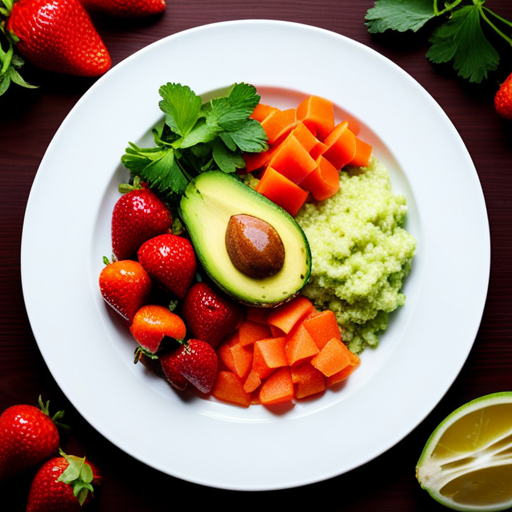"Cherishing Little Steps - A Haven for Baby and Family Journeys"
Baby’s First Foods
Did you know that introducing solid foods to your baby is a major milestone in their development? It’s true! Around 6 months of age, your little one is ready to start exploring new flavors and textures.
So, what are the best first foods for your baby? In this guide, we’ll walk you through the exciting journey of introducing solid foods to your little one, step by step. From simple single-ingredient purees to mashed and soft finger foods, we’ll help you navigate this important transition with confidence.
Our goal is to ensure that your baby receives a balanced and nutritious diet that supports their growth and development.
Let’s embark on this delicious adventure together!
Key Takeaways
- Gradually introduce age-appropriate solid foods to your baby, starting with small amounts once a day.
- Start with single-grain infant cereal or pureed fruits and vegetables, as they are easy to digest and provide important nutrients.
- Offer a variety of flavors early on to stimulate sensory development and develop a love for healthy eating.
- Introduce mashed and soft finger foods to encourage self-feeding skills and a balanced diet.
Age-Appropriate Solid Foods

You should gradually introduce age-appropriate solid foods to your baby, starting with small amounts once a day. The best time to start introducing solid foods to your baby is around six months of age. By this time, your baby’s digestive system is more developed, and they’re better able to handle solid foods. It’s important to look out for signs of readiness before introducing solids. These signs include your baby being able to sit up with minimal support, showing an interest in food, and being able to hold their head steady.
When introducing solid foods, it’s important to start with single-grain infant cereal or pureed fruits and vegetables. These foods are easy to digest and provide important nutrients for your baby’s growth and development. You can begin with small spoonfuls and gradually increase the amount as your baby gets used to the taste and texture. It’s recommended to only introduce one new food at a time, waiting a few days before introducing another. This way, you can easily identify any potential allergies or food sensitivities.
Introducing Single-Ingredient Purees

To introduce single-ingredient purees to your baby, begin by offering small spoonfuls of easily digestible foods. It’s important to introduce new foods one at a time, as this allows you to identify any potential allergies or sensitivities. Before introducing a new food, it’s a good idea to perform an allergy test. Simply rub a small amount of the food on your baby’s skin and wait for any signs of a reaction, such as redness or rash. If there are no adverse reactions, you can proceed with offering the food in the form of a puree.
When introducing single-ingredient purees, you have the option of using store-bought or homemade baby food. Homemade baby food can be a great choice as it allows you to have complete control over the ingredients and ensures that your baby isn’t consuming any unnecessary additives or preservatives. To make homemade purees, simply steam or cook the food until it’s soft and then blend it into a smooth consistency. You can also add breast milk or formula to thin out the puree if needed.
Remember to start with simple and easily digestible foods such as mashed bananas, avocados, or sweet potatoes. As your baby becomes more comfortable with different flavors and textures, you can gradually introduce a variety of fruits, vegetables, and grains. Always consult with your pediatrician before introducing new foods to ensure that your baby’s nutritional needs are being met.
Exploring New Textures and Flavors

When introducing new textures and flavors to your baby, it’s important to gradually expand their palate and offer a variety of different foods. By doing so, you can stimulate their sensory development and help them develop a lifelong love for healthy eating. Here are some tips to help you navigate this exciting phase:
-
Start with smooth purees: Begin by introducing single-ingredient purees, as discussed in the previous subtopic. This will help your baby get used to the process of eating and swallowing.
-
Gradually introduce new textures: As your baby becomes comfortable with purees, you can start introducing thicker textures. This can include mashed fruits and vegetables, soft cooked grains, and well-cooked meats.
-
Offer a variety of flavors: It’s important to expose your baby to a wide range of flavors early on. This can include sweet, savory, and even mildly spiced options. Be creative and experiment with different combinations to keep mealtime interesting.
-
Introduce allergenic foods with caution: Contrary to popular belief, research suggests that introducing allergenic foods early in a baby’s diet may reduce the risk of allergies. However, it’s important to consult with your pediatrician before doing so, especially if there’s a family history of food allergies.
Transitioning to Mashed and Soft Finger Foods

Start by gradually introducing mashed and soft finger foods to your baby’s diet. This is an important step in transitioning your little one to solid foods and encouraging self-feeding skills. Baby led weaning, which involves allowing your baby to explore and feed themselves, can be a great approach during this stage.
When introducing mashed and soft finger foods, it’s crucial to consider the texture and size of the food. Start with mashed fruits and vegetables, such as avocado or banana, which are easy to swallow and gentle on your baby’s developing digestive system. As your baby becomes more comfortable with these foods, you can gradually introduce cooked and mashed proteins like chicken or fish.
It’s also important to introduce allergenic foods during this time. Recent research suggests that early introduction of allergenic foods, such as peanuts and eggs, can actually help reduce the risk of developing food allergies. Start with a small amount and closely monitor your baby for any signs of an allergic reaction.
Remember to always supervise your baby during mealtime and offer a variety of foods to ensure a balanced diet. Encourage self-feeding by offering soft finger foods that your baby can easily pick up and explore. With patience and persistence, your baby will soon become a confident and independent eater.
Ensuring a Balanced and Nutritious Diet

You should always aim to provide a balanced and nutritious diet for your baby. This is crucial for their growth and development. Here are some important tips to ensure your baby gets the right nutrients:
-
Introduce a variety of fruits and vegetables: Fruits and vegetables provide essential vitamins, minerals, and fiber. Start by pureeing or mashing them and gradually increase the texture as your baby grows. Aim for a rainbow of colors to provide a wide range of nutrients.
-
Incorporate protein-rich foods: Protein is essential for your baby’s muscle and tissue development. Introduce age-appropriate protein sources such as mashed beans, soft tofu, finely shredded chicken, or pureed fish. You can also include dairy products like yogurt or cheese.
-
Offer whole grains: Whole grains provide energy and fiber. Include mashed or cooked grains like oats, quinoa, rice, or whole wheat bread. These can be easily incorporated into your baby’s diet through purees or as a finger food.
-
Don’t forget healthy fats: Healthy fats are essential for brain development. Avocado, nut and seed butters, and mashed cooked egg yolks are great options. Avoid added sugars and processed foods as they provide empty calories and lack essential nutrients.
Frequently Asked Questions
How Can I Tell if My Baby Is Ready to Start Eating Solid Foods?
You’ll know when your baby’s ready for solid foods when they can sit up with support, show interest in what you’re eating, and have good head control. It’s important to follow the recommended timeline for introducing solids.
What Is the Best Way to Introduce Allergenic Foods to My Baby?
When introducing allergenic foods to your baby, it’s important to take precautions. Start with small amounts and watch for any adverse reactions. Common allergenic foods include peanuts, eggs, and milk.
Are There Any Foods That I Should Avoid Giving to My Baby During the First Year?
You should avoid certain foods during your baby’s first year to reduce the risk of choking and potential allergies. Consult with your pediatrician, but generally, avoid honey, cow’s milk, shellfish, and large chunks of food.
How Can I Encourage My Baby to Try New Textures and Flavors?
To encourage your baby to try new textures and flavors, offer a variety of foods from an early age. Start with soft and pureed options, gradually introducing chunkier textures. Follow their lead, respecting their preferences, and make mealtime a positive and enjoyable experience.
What Are Some Tips for Transitioning My Baby From Purees to Mashed and Soft Finger Foods?
When transitioning stages from purees to mashed and soft finger foods, consider incorporating baby-led weaning. Start by introducing small, soft pieces of food and let your baby explore and feed themselves. Offer a variety of textures and flavors to encourage their independence and curiosity.
Conclusion
So there you have it, folks. It’s time to embark on the exciting journey of introducing your little one to solid foods.
From single-ingredient purees to mashed and soft finger foods, the world is their oyster (figuratively, of course).
Just remember to keep things balanced and nutritious, because we all know how important it’s for babies to maintain a well-rounded diet.
Bon appétit, tiny foodies!


